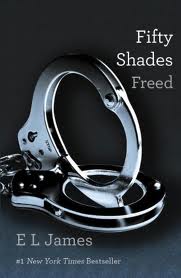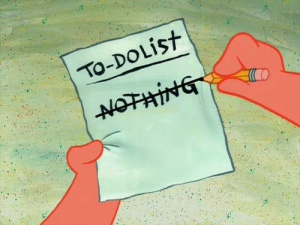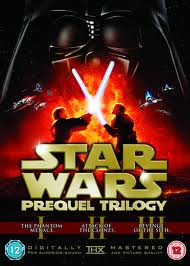Happy 2013, everybody! We’re starting on a new year, on a new page, and, in our case, on a brand spanking new Fifty Shades book!
Ha. Spanking. I still got it.

Praise
Much like Fifty Shades Darker, the third book in the trilogy Fifty Shades Darker also starts with a praise section. Much like Fifty Shades Darker, it’s probably my favorite part of the book. The gushing hyperbolic praise from someone compromising any kind of credibility they hope to ever have comes courtesy this time of a Penny-Ann Lupton. Ariel already broke down how hilariously bad her praise is, from her six out of five star review (seriously) to her warning that Fifty Shades “will literally ruin other books for you” (seriously). But I’d like to share one thing that Ariel hasn’t already shared with us, because it’s kind of awesome:
Yes there are some BDSM elements to the story, but that’s not what this novel is about. […] Still, I’m not going to lie, the erotic scenes are hot as hell—but they are tasteful
Exactly, they’re tasteful! Such as, say, the tampon scene:
He reaches between my legs and pulls on the blue string – what?! – and gently takes my tampon out and tosses it into the nearby toilet. Holy fuck. Sweet mother of all … Jeez. And then he’s inside me … ah!
If that isn’t good taste, then I’ve probably seen too much Toddlers and Tiaras.

Prologue
Also just like the book before it, Fifty Shades Freed begins with a prologue set during Christian’s early childhood. E L James interprets “child’s voice” as “100% observational, 0% reactional”, which is is a word that I just made up that means that James uses an oddly modernist, pseudo-stream of consciousness writing style to try to capture a child’s voice, and the effect, much like I said last time, is kind of strange.
Mommy is still asleep. Mommy wake up! She lies still. She is cold. I fetch my blankie, and I cover Mommy, and I lie down on the sticky green rug beside her. Mommy is still asleep. I have two toy cars. They race by the floor where Mommy is sleeping. I think Mommy is sick.
What’s weird is that I can’t decide if it works or not. Last time I complained that the starkness of the simplistic diction strips the scene of Christian’s emotional response: any pathos that the scene needs in order to work comes entirely from the reader’s response, whereas child Christian himself feels completely devoid of emotion, which is detrimental to the point of the scene: getting into Christian’s head and reliving his childhood horror.
Except there’s no denying that simplistic pseudo-modernist E L James is a lot better than regular E L James. There is a certain advantage to the rapid observation and narrative pacing despite the distance it creates from Christian’s feelings we’re supposed to be relating to.
My head hurts. The lady policeman is here. No. No. No. Don’t touch me. Don’t touch me. Don’t touch me. I stay by Mommy. No. Stay away from me.
Then again, when James does try to give us the character’s reactions and their feelings we’re supposed to be relating to, the result is, to use the technical term, an embarrassing clusterfuck. Once again, I refer you to the tampon scene:
He reaches between my legs and pulls on the blue string – what?! – and gently takes my tampon out and tosses it into the nearby toilet. Holy fuck. Sweet mother of all … Jeez. And then he’s inside me … ah!
Maybe E L James’s characters just work better when we can’t hear them think.
Chapter One
Ready to get into the last Fifty Shades book proper? The last book ended with Christian and Ana engaged, so I imagine this book is primarily about them getting married.
On the final leg of our honeymoon, we laze in the afternoon sun on the beach of the aptly named Beach Plaza Monte Carlo in Monaco
Oh my God, we skipped the wedding?! This is the best day ever!
“Can we marry tomorrow?” Christian murmurs softly in my ear. I am sprawled on his chest in the flowery bower in the boathouse, sated from our passionate lovemaking.
Oh. We get to hear the story in flashbacks. Great. So this is going to be like LOST. Except the only thing Fifty Shades Freed will likely have in common with it is a terrible ending.

Okay, well, if Fifty Shades Freed is going to try to pull off a narrative alternating between two periods of time, there’s a few things to consider. Because you’re telling the story out of order, there has to be a good reason to do so, because you’re effectively telling two stories in parallel. The catch is that they’re parts of the same story, so it has to do one of these things:
- Progress a “main story” in one time, while providing insight into character or circumstance in the other time. (LOST is a good example of this: many of the best episodes of LOST would tell a story that involved a character on the island while providing flashbacks to a specific event from their past that would offer insight into why the events now taking place on the island were meaningful to them, or why they would react to them in such a way, especially if it was an unexpected way)
- Create contrast and create more questions. (Memento is a good example of this: characters would be introduced in the past timeline and the present timeline acting completely differently, providing an additional layer of mystery that the viewer would have to contemplate until more answers would be provided)
- Or it could go in a post-modernist direction and completely forgo chronological structure, instead presenting a sequence of events in a way that was more important to narrative structure. (Pulp Fiction is a good example of this, because the movie ends in roughly the middle of middle of the sequence of events, but at a significant moment for one of the characters that caused him to change his life. Slaughterhouse Five is another good example of this, ending the narrative with an event that happens nowhere near the end, chronologically, but rather with an event referenced throughout the rest of the story)
Guess which one of these Fifty Shades Freed does?

Back on the island, Christian and Ana love each other, but Ana takes issue with Christian’s possessive tendencies!
I roll over, and he undoes the back strap of my hideously expensive bikini.
“How would you feel if I went topless, like the other women on the beach?” I ask.
“Displeased,” he says without hesitation. “I’m not very happy about you wearing so little right now.”
Flashback to the wedding, Christian and Ana love each other, but Ana takes issue with Christian’s possessive tendencies!
“You may kiss the bride,” Reverend Walsh announces.
I beam at my husband.
“Finally, you’re mine,” […] he murmurs and smiles, his eyes glowing with love … and something darker, something hot. “Don’t let anyone take that dress off but me, understand?” […]
Holy crap … How does he do this, even here with all these people staring at us?
The chapter keeps going back and forth and back and forth and it is always the same thing. The same thing we’ve been reading for two books now, except now we get to read the same thing again and again… but out of order. Tip: this is not a good way to write. Instead of learning things from an interesting angle we wouldn’t have otherwise, the effect is more like flipping back and forth between two stories every time they get too boring to keep reading. Except it’s all terrible.

After that, it’s the same Fifty Shades it always is. Christian and Ana make lots of jokes that are basically in joke public domain:
He smiles, his expression heating. “This beautiful dress becomes you.”
“This old thing?”
E L James continues to shit all over Jose:
“I’m happy to see you happy, but I’m serious, Ana. I’ll be here . . . If you need me.”
“José, thank you. You’re a good friend.”
“I mean it.” His dark eyes shine with sincerity.
And, of course, things are always more than a little creepy:
“You didn’t promise to obey,” [my mom] reminds me tactfully. Kate tries to disguise her snort as a cough. I narrow my eyes at her. Neither she nor my mother have any idea of the fight Christian and I had about that. I don’t want to rehash that argument. […]
“I know, Mom, but he likes this dress, and I want to please him.”

They leave their wedding to go on their honeymoon and get on Christian’s private plane and Ana gives one of her usual hilariously stupid observations:
Holy cow . . . another first. I gape at him, my heart pounding . . . the mile high club. I’ve heard about this.
The sex scene that follows is typical creepy Fifty Shades fare. Christian touches different parts of Ana’s body, saying “mine” each time. Just in case we somehow still haven’t figured out that Christian is weirdly possessive yet.
“Mine,” he whispers once more. He peels my dress down my arms so that it pools at my feet in a cloud of ivory silk and lace. […]
his thumbs circle over my nipples so that they strain against the fabric of my corset.
“Mine,” he whispers. […]
“Mine,” he breathes as his hands spread across my backside, the tips of his fingers brushing my sex.

And then it’s about as erotic as it always isn’t.
His lips find mine, his hands curling around my head, holding me, stilling me as our tongues glory in each other.
Hahaha, okay, actually, that’s awesome; I’m totally only referring to making out as “tongues glorying in each other” from now on. I’m not sure if this is a challenge, or a vow of chastity.
The chapter ends with the flashback sequence over (hopefully forever) and Christian’s mad at Ana for taking off her bikini top.
Yep. That’s how the plot gets started for the exciting final installment in the Fifty Shades trilogy. Gripping.


“The catch is that they’re parts of the same story, so it has to do one of these things:
Progress a “main story” in one time, while providing insight into character or circumstance in the other time.”
Sheri S. Tepper’s “The Gate to Women’s Country” is an excellent example of this device. It starts with the main character at age 37 going through an event that is deeply hurtful for her in the first chapter, and in the second chapter we get that character at age 11, on the fateful day when she meets a certain person who will change the entire course of her life, though she does not know it yet. The “now” chapters with the 37 year old are brief, no more than 5 pages, maybe, and the chapters taking place in the past are the real meat of the story, being standard chapter length and explaining how events in her life unfolded. Truly a book that makes the flashback technique WORK, with each chapter beautifully setting up the next one and keeping you turning pages.
🙂 Something to read for later, when you just can’t stand anymore 50 Shades of Crap.
I’ll look it up on goodreads 🙂 always looking for more books
Pingback: One Exact Same Book Down, Two Exact Same Books To Go: Grey Chapters 24 & 25 - Bad Books, Good Times